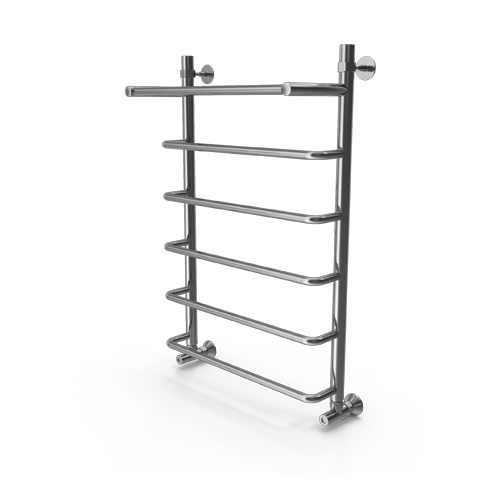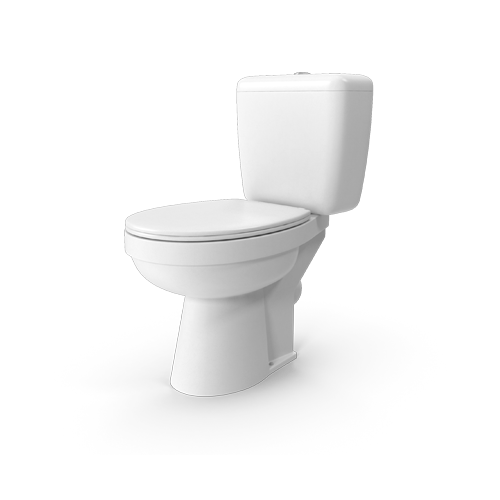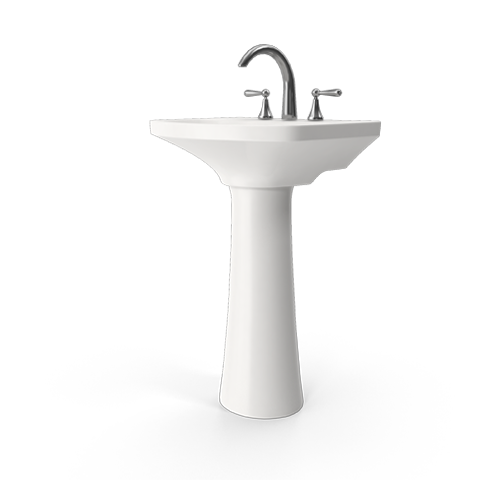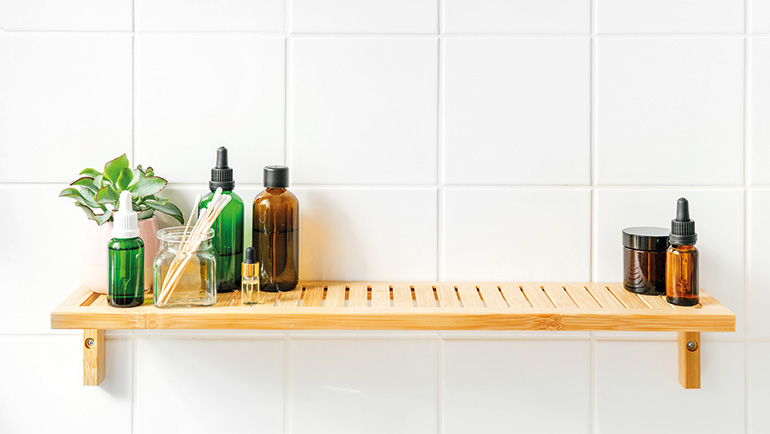How to Remove Bathroom Mould
Mould in the bathroom is a common problem that many homeowners face. Not only is it unsightly, but it can also pose serious health risks. In this article, we will discuss the nature of bathroom mould, the health risks associated with it, and how to safely and effectively remove it from your bathroom. We will also provide tips on preventing future mould growth. So, if you’re ready to say goodbye to that stubborn bathroom mould, let’s get started!
Understanding the Nature of Bathroom Mould
What is Bathroom Mould?
Bathroom mould refers to the growth of fungi in damp or humid areas of your bathroom. It often appears as black or greenish spots on walls, tiles, or other surfaces. Mould is a type of fungus that thrives in moist environments and reproduces by releasing spores into the air.
When it comes to bathroom mould, prevention is key. Understanding the nature of this pesky problem can help you take the necessary steps to keep your bathroom clean and mould-free.
Did you know that mould is a natural part of our environment? It plays an important role in breaking down organic matter, such as dead leaves and fallen trees. However, when mould starts growing indoors, it can cause a range of health issues and damage to your home.
Now, let’s dive deeper into the reasons why mould tends to make its home in our bathrooms.
Why Does Mould Grow in Bathrooms?
Mould thrives in bathrooms due to the high levels of moisture and humidity present. These conditions create an ideal breeding ground for mould spores to settle and grow. Lack of proper ventilation, water leaks, or inadequate cleaning can also contribute to the growth of mould.
Humidity is the amount of moisture present in the air, and bathrooms are notorious for being humid environments. When you take a hot shower or bath, the steam created increases the humidity levels in the room. If the moisture is not properly ventilated, it can linger in the bathroom, providing the perfect conditions for mould to thrive.
Furthermore, water leaks can contribute to the growth of mould. Even a small leak in a pipe or a faulty seal around your bathtub can create a damp environment that mould spores find inviting. It’s essential to address any leaks promptly to prevent mould from taking hold.
Another factor that can contribute to the growth of mould in bathrooms is inadequate cleaning. Regular cleaning helps to remove any moisture or organic matter that mould feeds on. Neglecting to clean your bathroom regularly can provide mould with the nutrients it needs to flourish.
It’s worth noting that certain building materials, such as drywall or wallpaper, can also be more susceptible to mould growth. These materials can absorb moisture, providing an ideal surface for mould to colonize.
By understanding the reasons behind mould growth in bathrooms, you can take proactive measures to prevent its occurrence. From improving ventilation to fixing leaks and maintaining cleanliness, there are several steps you can take to keep your bathroom mould-free.
The Health Risks Associated with Bathroom Mould
Bathrooms are a haven for moisture, making them a prime breeding ground for mould. While many people may think of mould as just an unsightly nuisance, it can actually pose serious health risks. Exposure to mould in the bathroom can trigger allergies and respiratory problems, especially in individuals who are already sensitive or have pre-existing conditions.
Allergies and Respiratory Issues
Mould releases tiny spores into the air, which can be inhaled and cause allergic reactions. Common symptoms of mould allergies include sneezing, coughing, itchy eyes, and nasal congestion. These symptoms can be particularly troublesome for individuals who already suffer from allergies or asthma.
In addition to allergic reactions, prolonged exposure to mould in the bathroom can lead to more severe respiratory issues. The presence of mould can irritate the airways and potentially trigger asthma attacks. It can also increase the risk of respiratory infections, as the spores can compromise the immune system’s ability to fight off pathogens.
Other Potential Health Problems
While allergies and respiratory issues are the most commonly associated health problems with bathroom mould, they are not the only concerns. Some studies have suggested a link between prolonged exposure to mould and various other health implications.
One such implication is skin irritation. Mould spores can come into direct contact with the skin, leading to rashes, itching, and redness. This can be particularly problematic for individuals with sensitive skin or pre-existing skin conditions.
Headaches and fatigue are also potential health concerns associated with bathroom mould. The presence of mould in the bathroom can release volatile organic compounds (VOCs) into the air. These compounds can cause headaches and make individuals feel tired or fatigued, even after a good night’s sleep.
Furthermore, some research has suggested a possible connection between mould exposure and mental health issues. Living in a damp and mouldy environment can contribute to feelings of depression and anxiety. The exact mechanisms behind this association are still being studied, but it highlights the importance of addressing and eliminating any mould infestations promptly.
In conclusion, bathroom mould is not just a cosmetic issue. It can have significant health implications, ranging from allergies and respiratory problems to skin irritation, headaches, fatigue, and even mental health issues. Taking proactive measures to prevent and eliminate mould in the bathroom is crucial for maintaining a healthy living environment.
Tools and Materials Needed for Mould Removal
When it comes to tackling mould in your bathroom, it’s important to be well-prepared. Before you start removing the unsightly growth, you’ll need to gather the necessary cleaning agents and protective gear to ensure a safe and effective clean.
Cleaning Agents for Mould Removal
There are several effective options when it comes to cleaning agents for mould removal. One popular choice is bleach, which is known for its powerful disinfecting properties. Another natural alternative is vinegar, which not only kills mould but also helps to prevent its regrowth. Hydrogen peroxide is also a viable option, as it is effective in killing mould spores. If you prefer ready-made solutions, there are commercial mould removers available on the market as well. Whichever cleaning agent you choose, it’s important to read the instructions carefully and follow proper safety precautions.
When using bleach or commercial mould removers, it’s essential to wear gloves to protect your hands from the harsh chemicals. Safety goggles are also recommended to shield your eyes from any potential splashes. Additionally, wearing a face mask is crucial to prevent direct contact with mould spores, as they can cause respiratory issues. Remember, safety should always be a top priority when dealing with mould removal.
Protective Gear for Safe Cleaning
Aside from the cleaning agents, it’s equally important to have the right protective gear to ensure safe cleaning. In addition to gloves, safety goggles, and a face mask, consider wearing long-sleeved clothing to minimize skin exposure. Mould spores can easily attach to clothing and be carried to other areas, so it’s best to choose garments that can be easily washed afterwards.
Proper ventilation is also crucial during the mould removal process. Opening windows or using a fan can help to circulate fresh air and prevent the accumulation of harmful fumes. Adequate ventilation not only helps to protect your health but also aids in drying out the affected area, making it less conducive for mould growth.
By gathering the necessary tools and materials, as well as wearing the appropriate protective gear, you’ll be well-prepared to tackle the task of mould removal. Remember to take your time and follow the recommended safety precautions to ensure a thorough and safe clean.
Step-by-Step Guide to Removing Bathroom Mould
Preparing Your Bathroom for Cleaning
Before you begin the process of removing bathroom mould, it’s important to prepare the area properly. Start by clearing the space around the mould-infested surfaces. Remove any objects, such as towels or toiletries, to prevent them from getting contaminated. This will ensure that you have a clear and unobstructed workspace to focus on the task at hand.
Additionally, it is recommended to open windows or turn on the bathroom fan to improve ventilation. This will help to reduce the concentration of mould spores in the air, making the cleaning process safer and more effective. Proper ventilation is crucial as it allows fresh air to circulate, preventing the mould from spreading further.
Applying the Cleaning Solution
Now that your bathroom is ready, it’s time to tackle the mould head-on. Prepare a cleaning solution by mixing one part bleach or vinegar with four parts water. Both bleach and vinegar are known for their effectiveness in killing mould and preventing its regrowth.
Once you have your cleaning solution ready, apply it to the affected areas using a spray bottle, sponge, or cloth. Ensure that you cover the mould completely, allowing the solution to penetrate and break down the mould’s structure. Let it sit for a few minutes to ensure maximum effectiveness.
Scrubbing and Rinsing the Mould Away
After the cleaning solution has had time to work its magic, it’s time to get scrubbing. Use a scrub brush or sponge to gently scrub away the mould. It’s important to use small circular motions and apply gentle pressure to avoid damaging the surface underneath.
As you scrub, you’ll notice the mould starting to loosen and come off. Continue scrubbing until all visible traces of mould have been removed. Be thorough and pay attention to any hidden corners or crevices where mould might be lurking.
Once you’re satisfied with the scrubbing, it’s time to rinse the area thoroughly with clean water. This will help to remove any residue and leftover cleaning solution, ensuring a clean and mould-free surface. Use a clean cloth or sponge to wipe away the excess water and allow the area to dry completely.
Remember, removing bathroom mould is not a one-time fix. It’s important to address the underlying cause of the mould growth, such as poor ventilation or excessive moisture. By taking preventive measures, you can minimize the chances of mould returning and keep your bathroom clean and healthy.
Preventing Future Mould Growth in Your Bathroom
Improving Bathroom Ventilation
One of the best ways to prevent mould growth in your bathroom is to improve ventilation. Ensure that your bathroom has proper airflow by opening windows, installing an extractor fan, or using a dehumidifier. This will help to reduce humidity and moisture levels, making it less conducive for mould to thrive.
When it comes to bathroom ventilation, there are a few things to consider. Firstly, opening windows can be a great way to let fresh air in and allow moisture to escape. However, if your bathroom doesn’t have windows, or they are not easily accessible, you might want to consider installing an exhaust fan. An exhaust fan can effectively remove excess moisture from the air, preventing it from settling on surfaces and creating a breeding ground for mould.
Another option to improve ventilation is by using a dehumidifier. A dehumidifier works by extracting moisture from the air, helping to maintain optimal humidity levels in your bathroom. This can be particularly useful in areas with high humidity or if you live in a climate where moisture is a constant issue.
Regular Cleaning and Maintenance
To keep mould at bay, it’s essential to maintain a regular cleaning routine. Clean your bathroom regularly, paying extra attention to areas prone to moisture, such as shower curtains, tiles, and grout. Dry surfaces thoroughly after use and fix any leaks promptly to prevent water build-up.
When it comes to cleaning your bathroom, there are a few tips and tricks that can help you effectively remove mould and prevent its recurrence. Firstly, make sure to use a cleaning solution specifically designed to kill mould and mildew. These products are formulated to target and eliminate mould spores, ensuring a thorough clean.
In addition to using the right cleaning products, it’s important to scrub all surfaces thoroughly. Pay close attention to areas where mould tends to grow, such as the grout between tiles or the corners of your shower. Use a scrub brush or an old toothbrush to reach into those hard-to-reach spots and remove any traces of mould.
After cleaning, it’s crucial to dry all surfaces thoroughly. Mould thrives in damp environments, so by removing excess moisture, you can prevent its growth. Use a towel or a squeegee to dry your shower walls and floor, and make sure to hang your wet towels and bath mats in a well-ventilated area to prevent them from becoming a breeding ground for mould.
Using Mould-Resistant Products in Your Bathroom
Consider using mould-resistant paints, sealants, or materials when renovating or updating your bathroom. These products are specially designed to inhibit mould growth and can be an excellent long-term solution for preventing mould infestations.
When it comes to choosing mould-resistant products, there are a few options to consider. Mould-resistant paints are formulated with additives that help to prevent mould growth on walls and ceilings. These paints are available in various colours and finishes, allowing you to maintain the aesthetic appeal of your bathroom while keeping mould at bay.
In addition to paints, there are also mould-resistant sealants available for use in your bathroom. These sealants can be applied to areas such as around your bathtub or shower, preventing moisture from seeping into cracks and crevices where mould can thrive. By using mould-resistant sealants, you can create a barrier that inhibits mould growth and makes it easier to clean your bathroom surfaces.
Lastly, consider using mould-resistant materials when renovating your bathroom. For example, there are mould-resistant drywall and tiles available that are designed to resist mould growth. By choosing these materials, you can create a bathroom environment that is less susceptible to mould infestations and easier to maintain in the long run.
By following these steps and implementing preventive measures, you can effectively remove bathroom mould and maintain a clean and healthy space. Remember, the key is to address mould as soon as possible and take proactive steps to prevent its return. So, say goodbye to that pesky mould and enjoy a fresh and mould-free bathroom!
If you need any further advice or support, please speak to the plumleys team.



